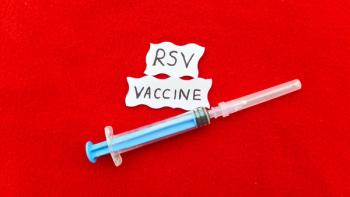
Prescription Drug Spending Projected to Grow This Year
“National trends in prescription drug expenditures and projections for 2017,” highlights total US prescription sales for the 2016 calendar year.
A new report on national trends in prescription drug expenditures published in AJHP (American Journal of Health-System Pharmacy) projects a 6 to 8% increase in total drug expenditures in 2017 across all healthcare settings. The report also projects an 11 to 13% increase in clinic spending and a 3 to 5% increase in hospital spending. ASHP publishes this annual projection of drug expenditures to help health-system pharmacy leaders plan drug budgets.
The article, “National trends in prescription drug expenditures and projections for 2017,” highlights total U.S. prescription sales for the 2016 calendar year, which amounted to $448 billion, a nearly 6% increase compared with 2015. Prescription expenditures in clinics totaled nearly $64 billion, a 12 percent increase from 2015. Hospital drug spending was almost $35 billion, up 3 percent from 2015.
“This report shows that pharmacy leaders in all healthcare settings are being challenged with balancing drug budgets in light of rising drug costs,” said ASHP CEO Paul W. Abramowitz, PharmD, ScD.(Hon.), FASHP. “Addressing rapidly escalating drug prices is a top priority for ASHP, and we continue to serve as a lead member of the
In 2016, price hikes in existing drugs were the biggest driver of cost increases. Adalimumab was the top drug overall in 2016 expenditures, accounting for nearly $14 billion. This is an increase of almost 28% from 2015. Iniximab was the top drug in clinics and hospitals, accounting for $3.5 billion and $1 billion, respectively. In 2016, spending on immunoncology agents was nearly $5 billion across all sectors, representing a 159% increase from 2015.
“Looking ahead, specialty drugs, and especially the new immunoncology agents, will drive growth in drug expenditures in 2017,” said the report’s lead author Glen T. Schumock, PharmD, PhD, MBA, Professor and Head of the Department of Pharmacy Systems, Outcomes, and Policy at the College of Pharmacy at the University of Illinois, Chicago. “On the other hand, the incorporation of biosimilars into the marketplace will create competition and lower prices for traditional, older biologics, which will offset spending on new immunoncology agents. Health-system pharmacists will need to pay close attention and, where possible, implement programs to ensure appropriate use.”
The drug expenditures report also provides a list of select drugs and biologics that have or may receive FDA approval in 2017, as well as drugs that have the potential for a patent expiration this year.
Newsletter
Stay informed on drug updates, treatment guidelines, and pharmacy practice trends—subscribe to Pharmacy Times for weekly clinical insights.




















































































































































































































